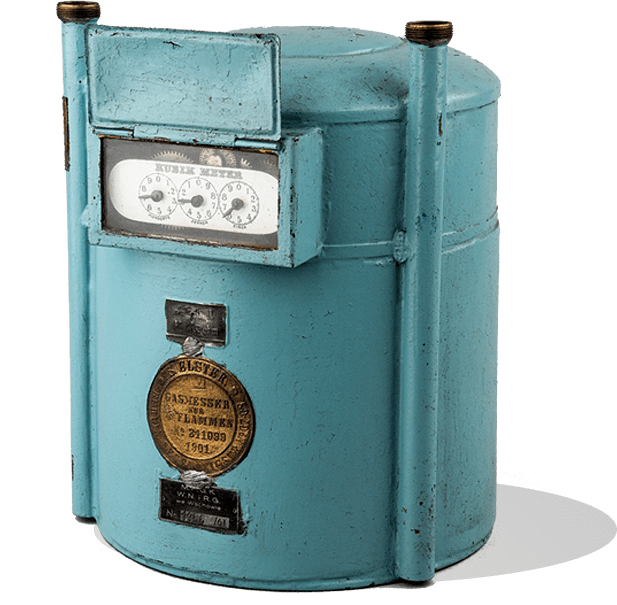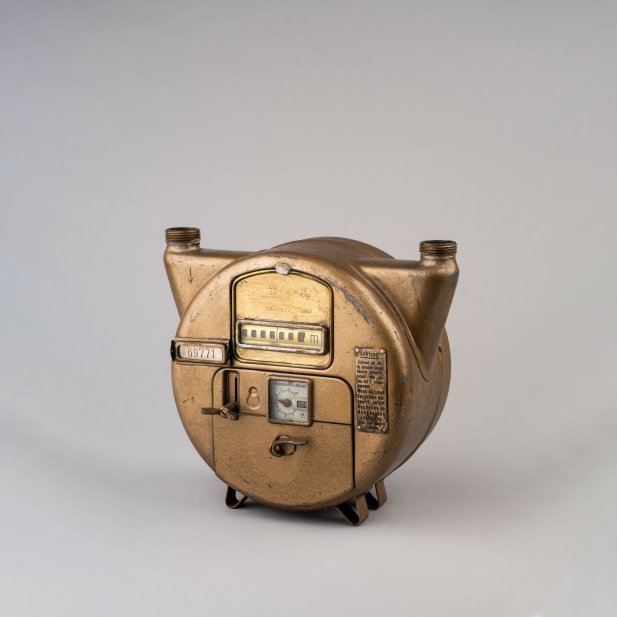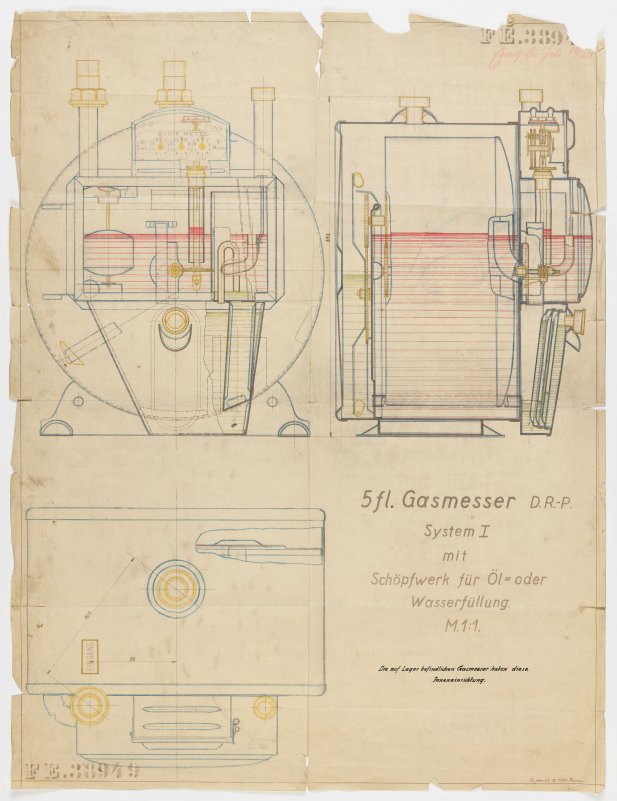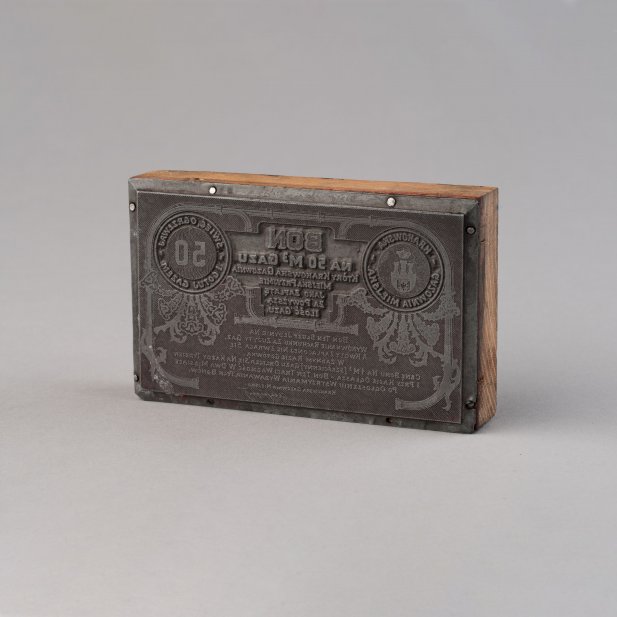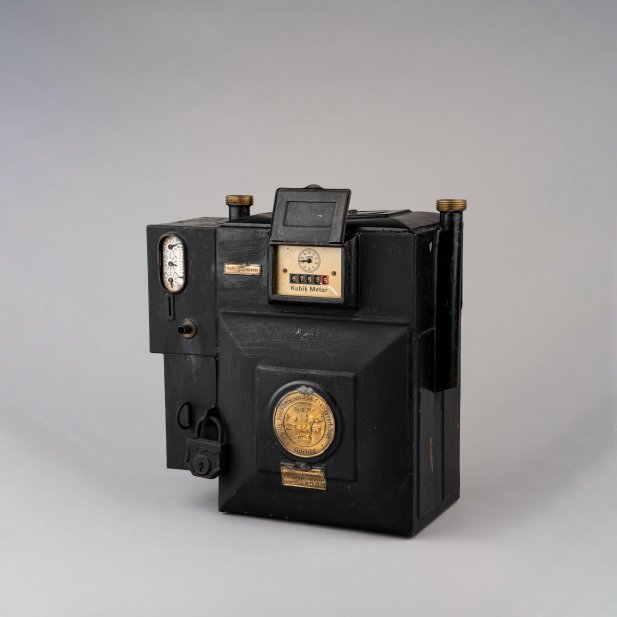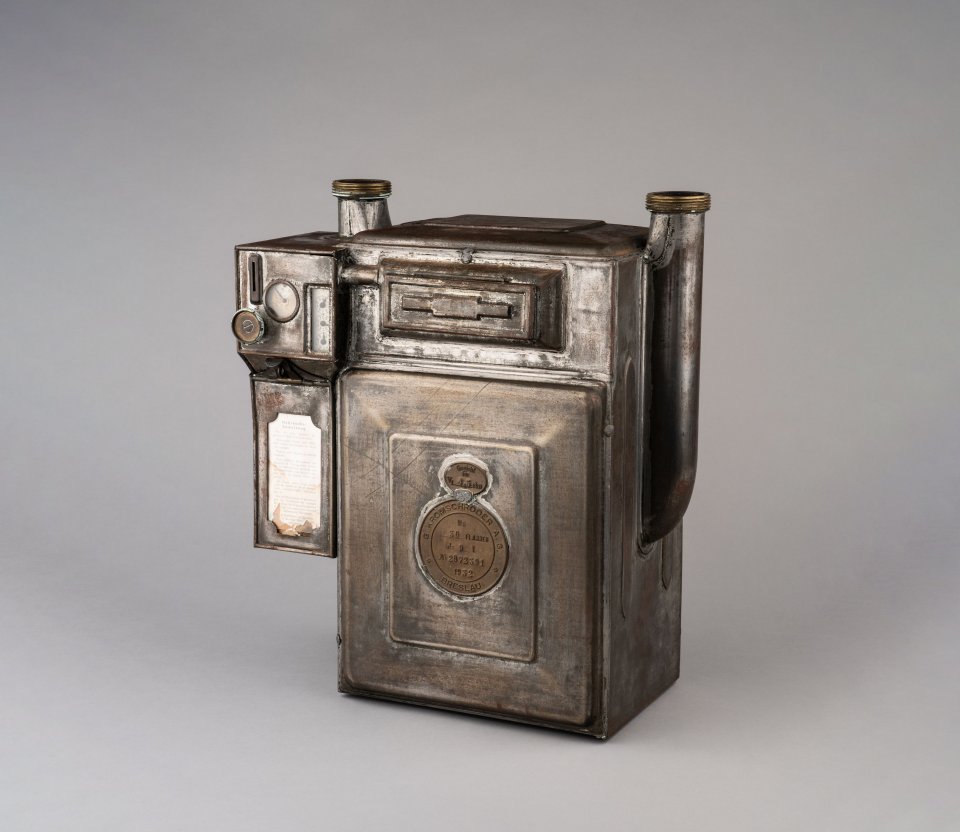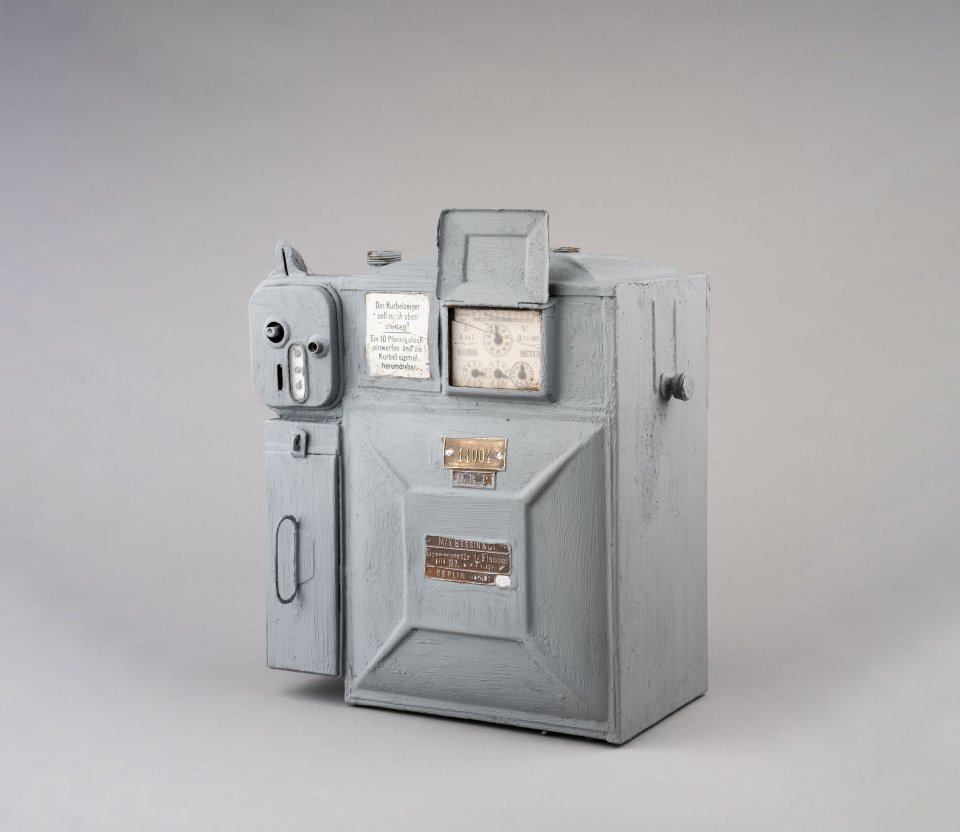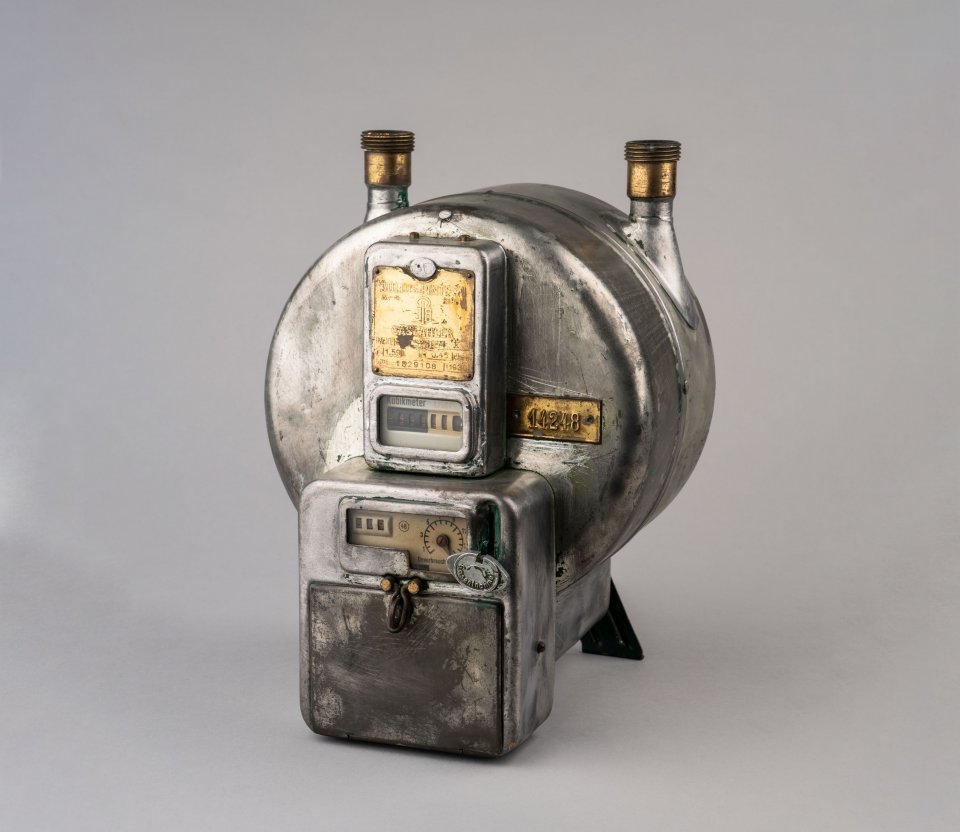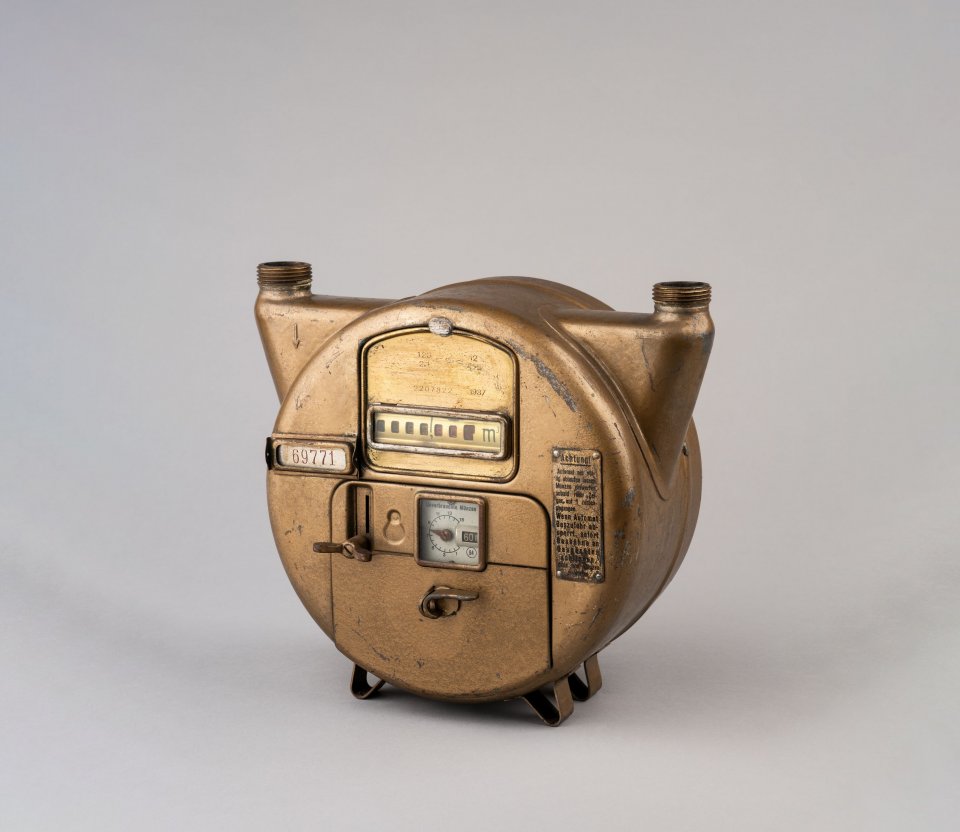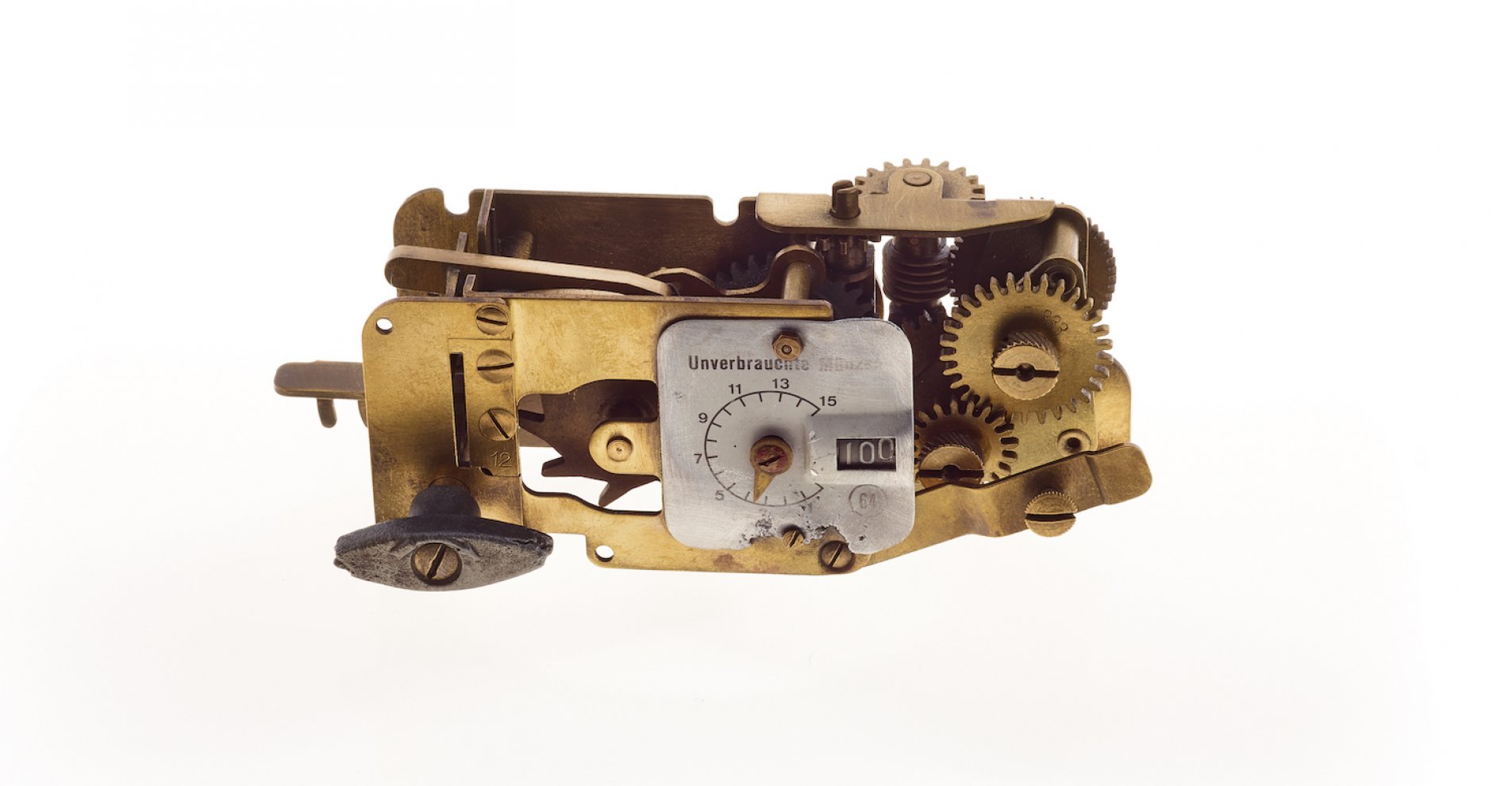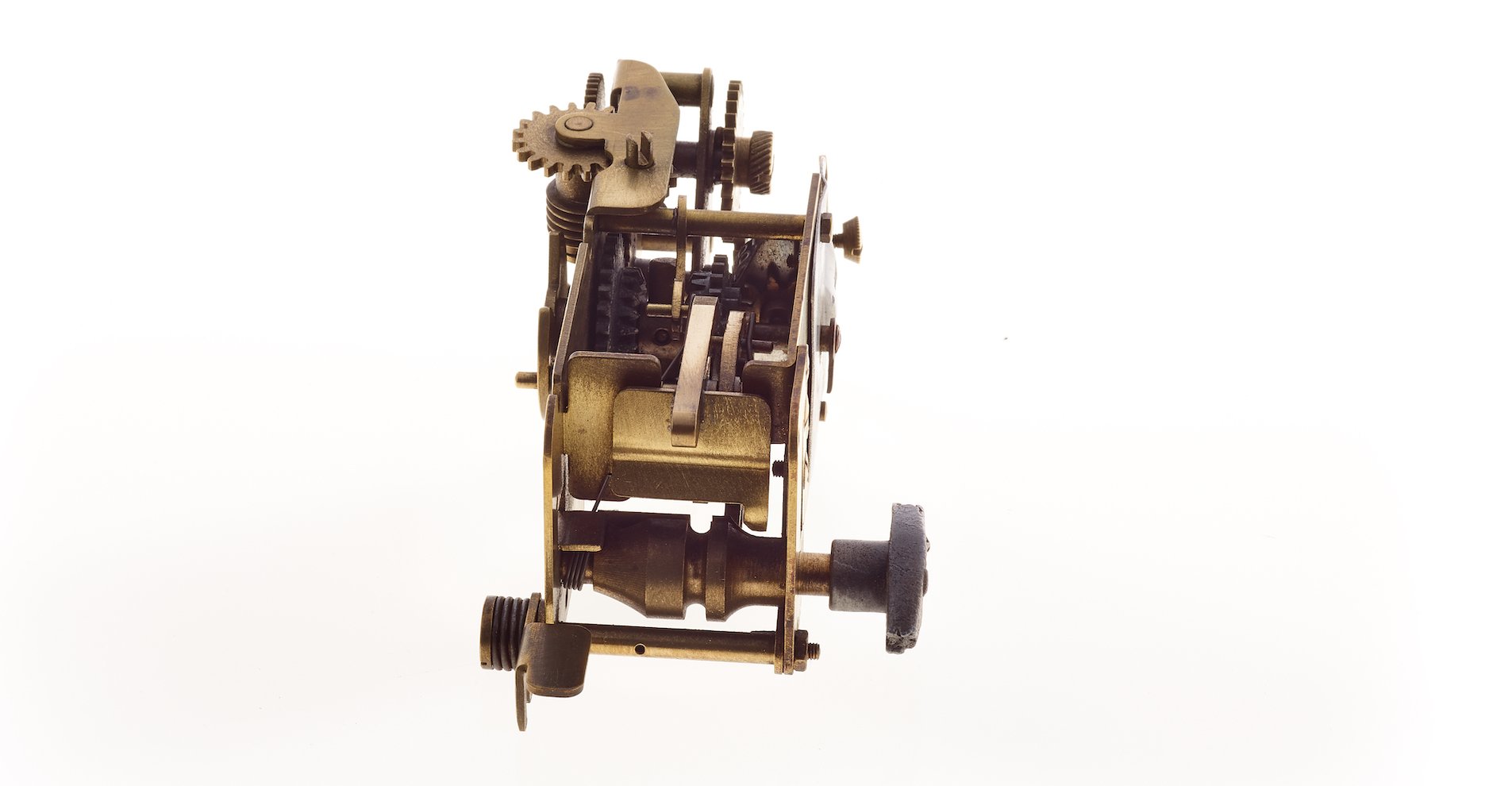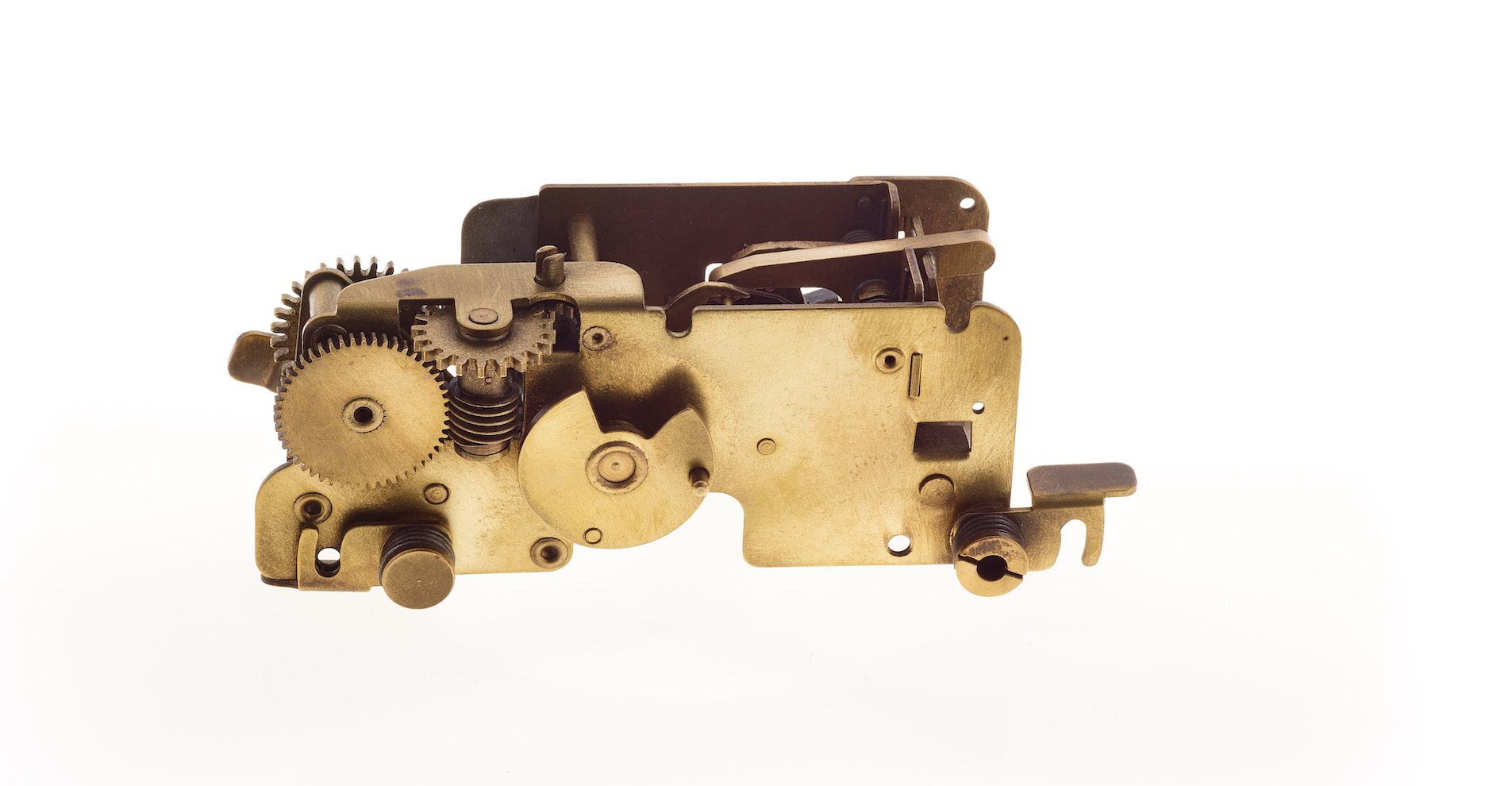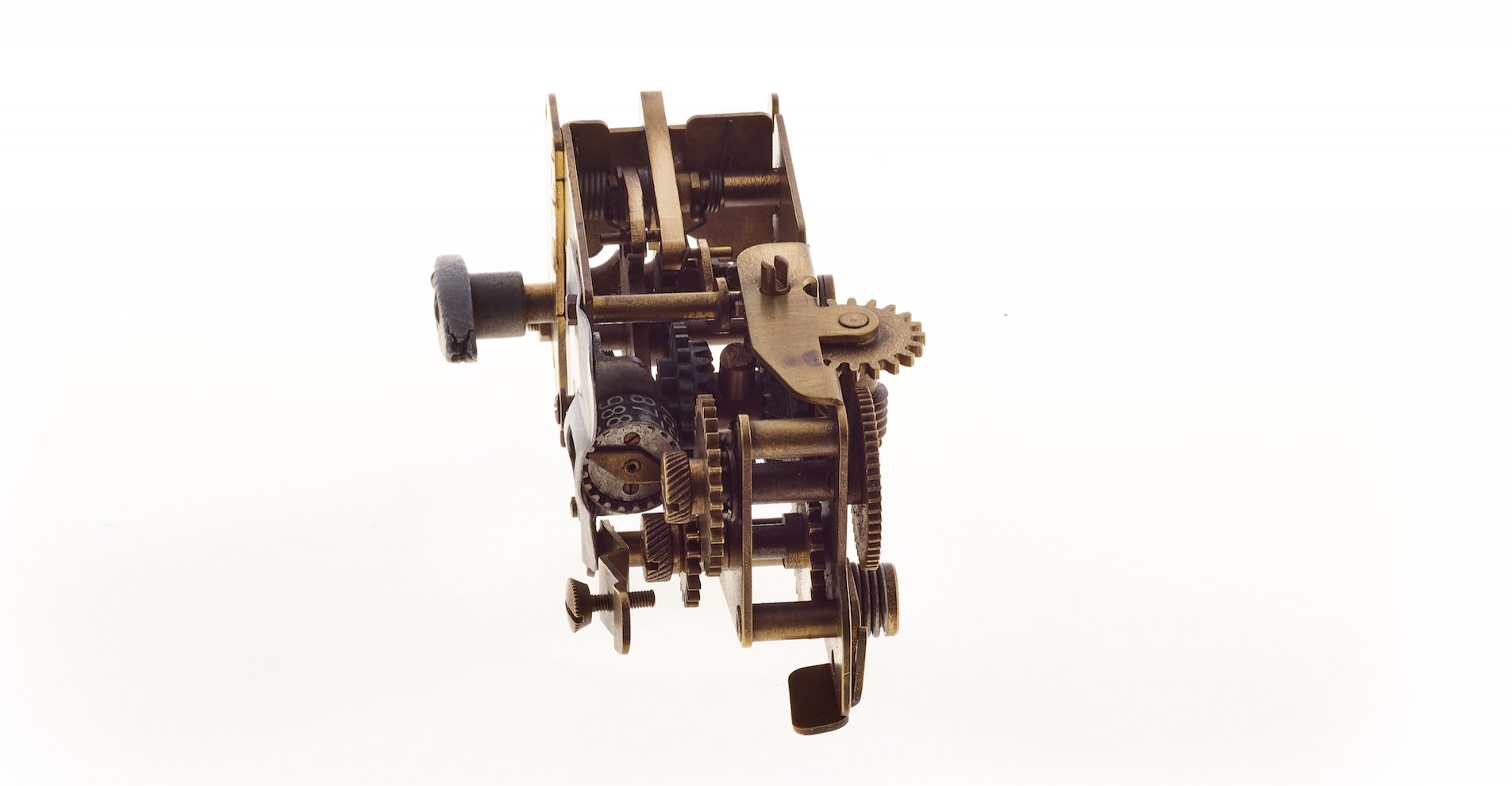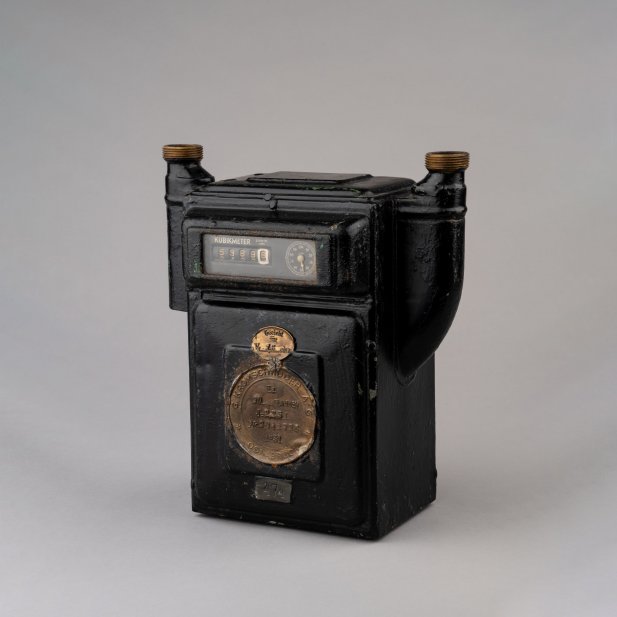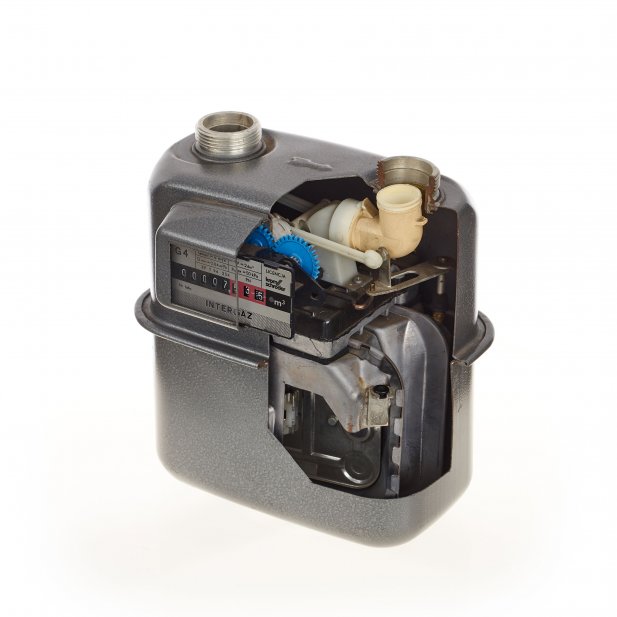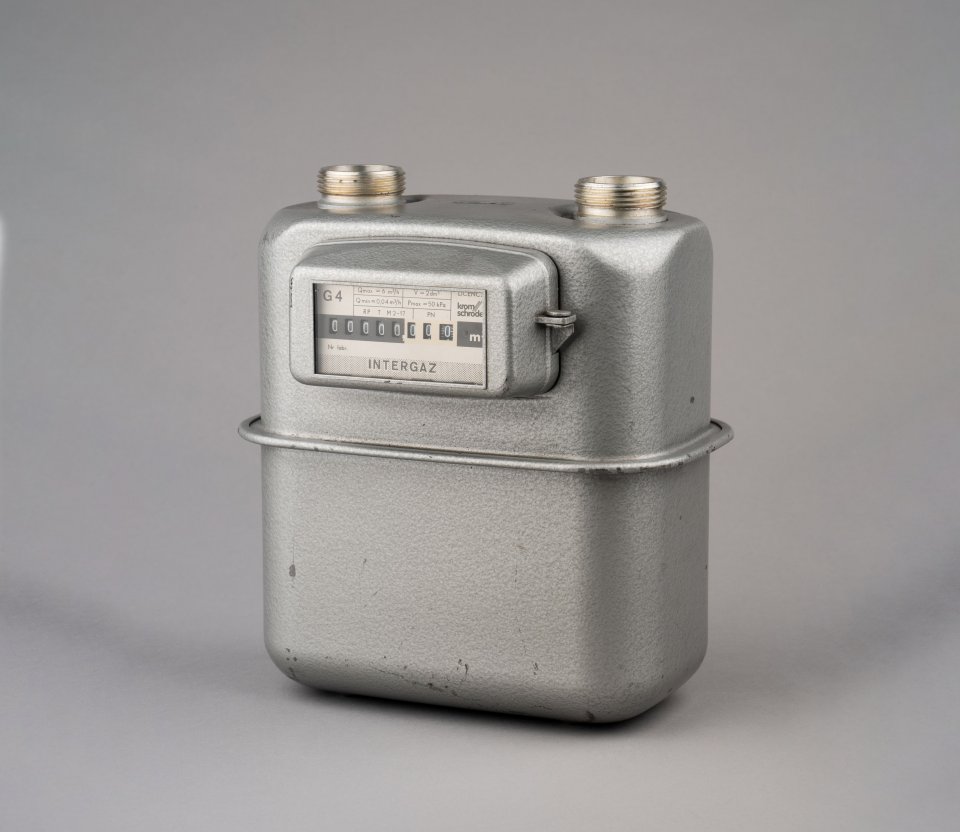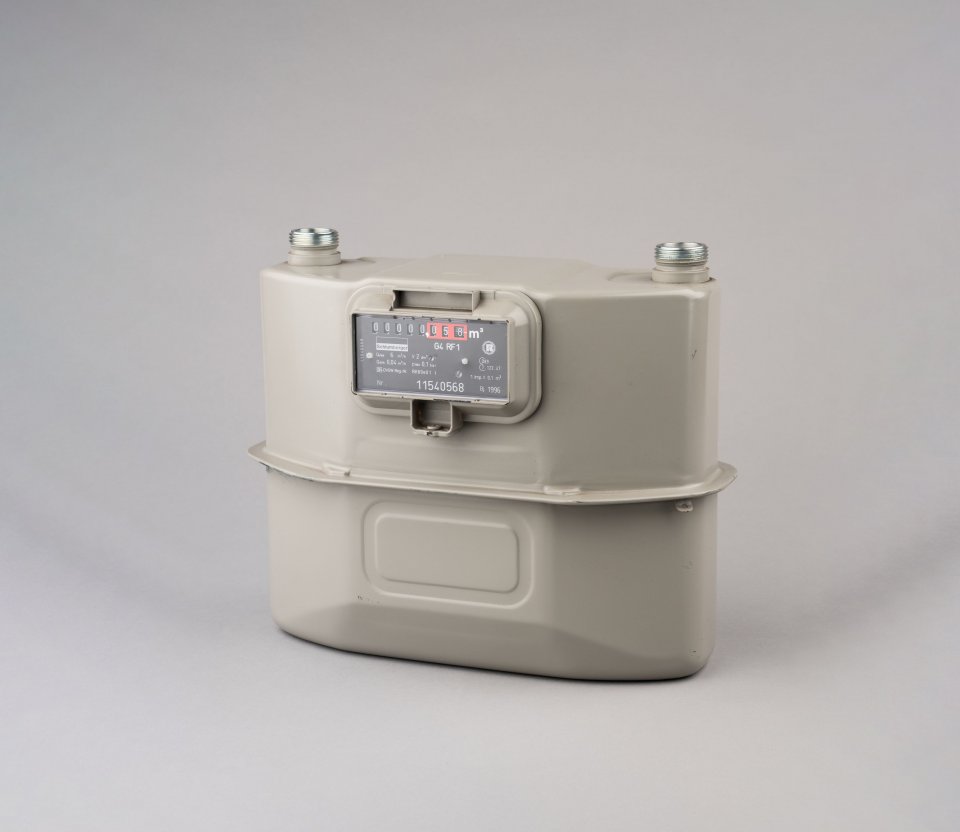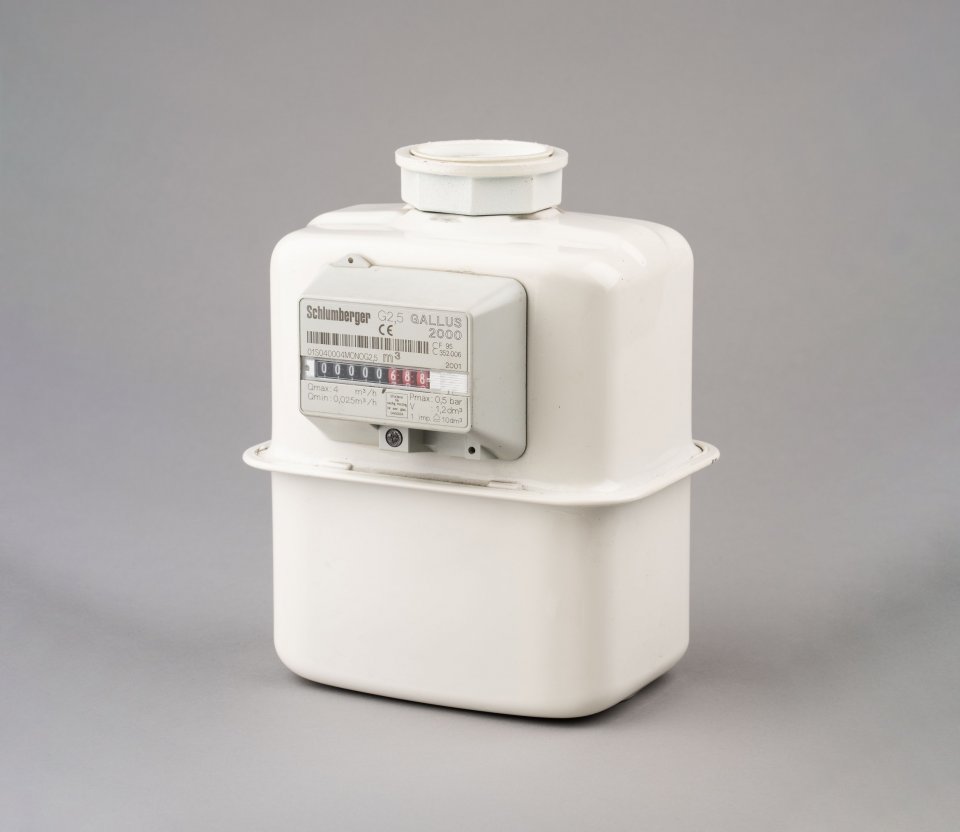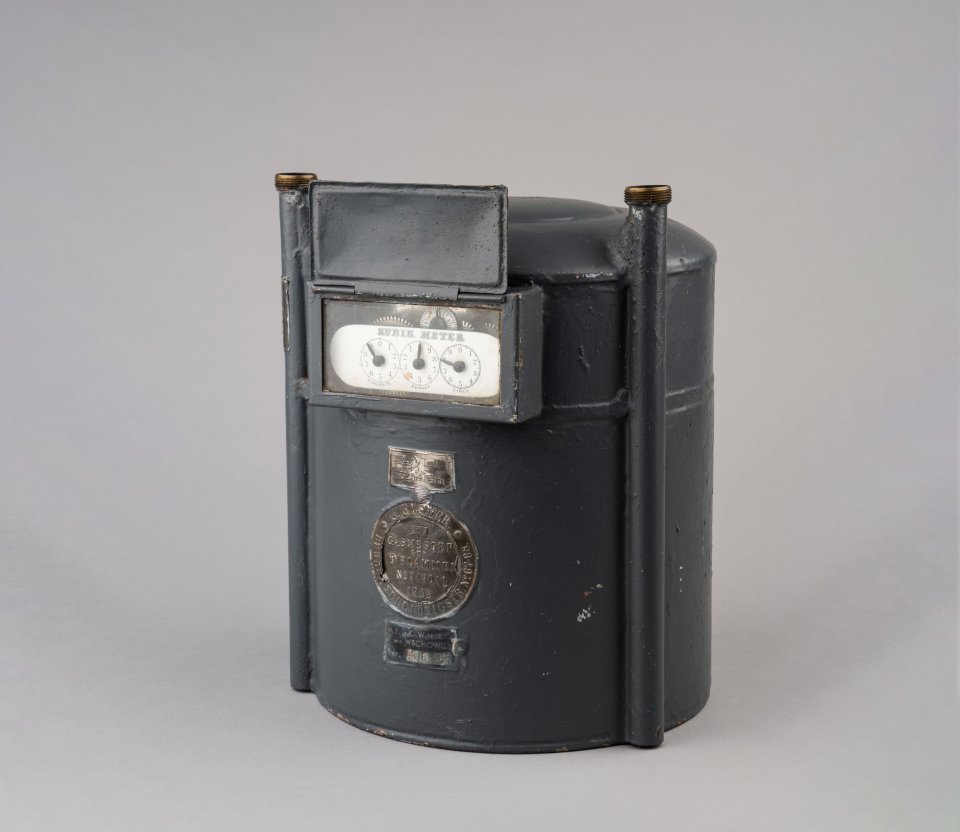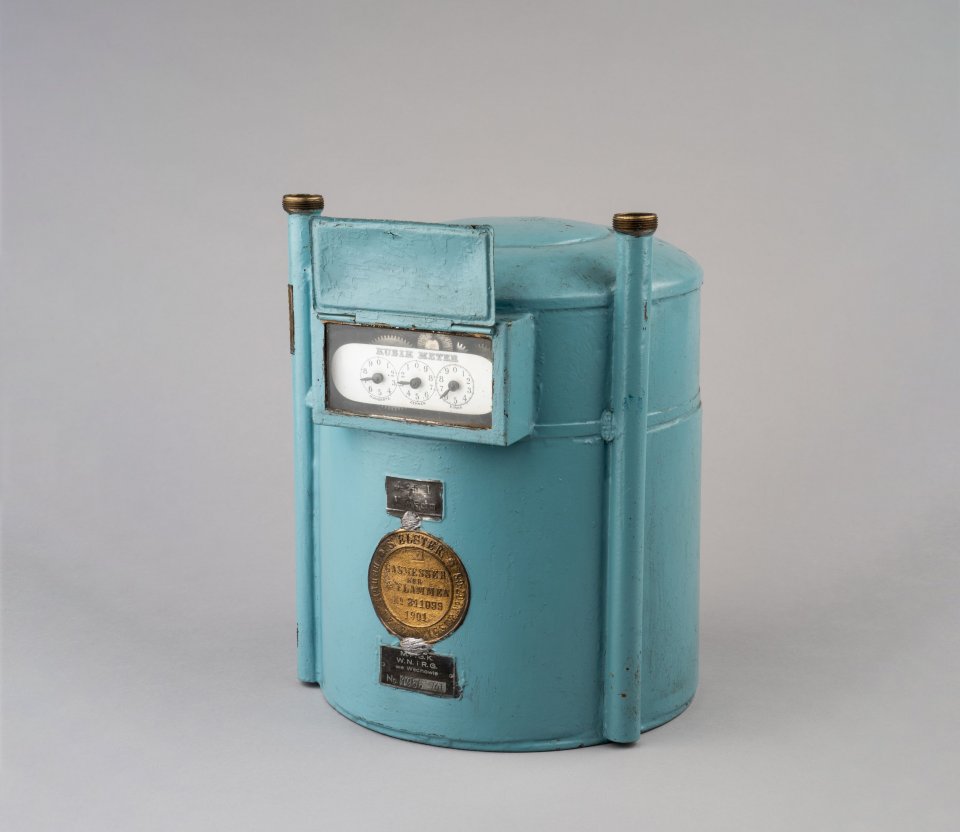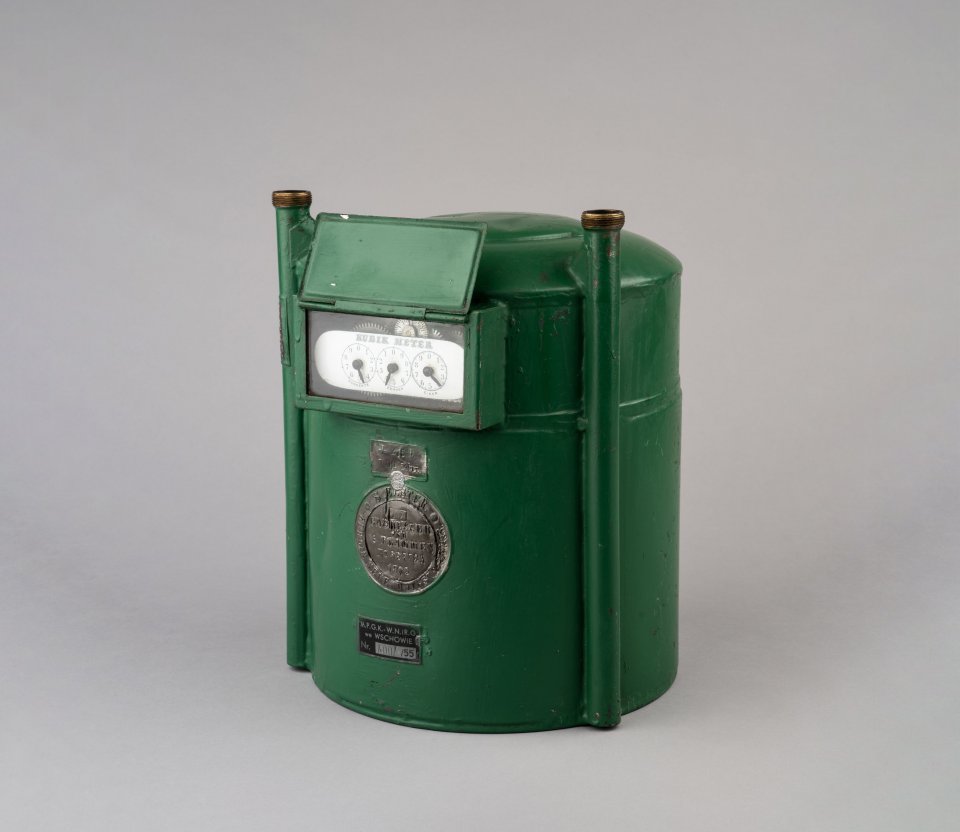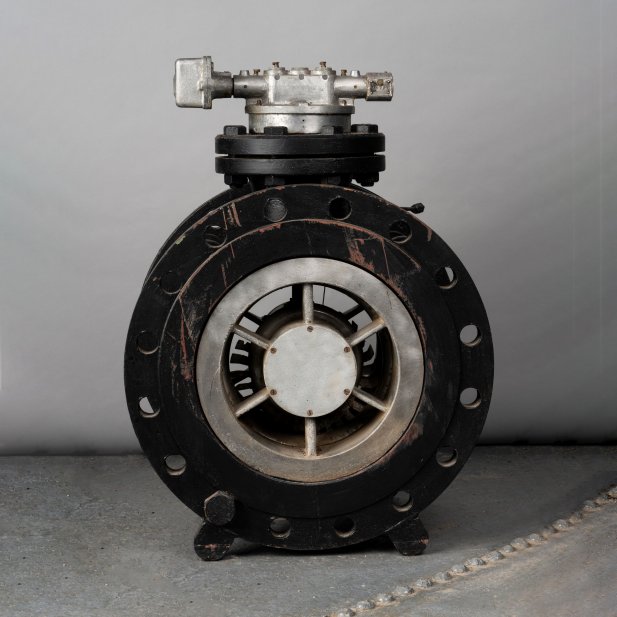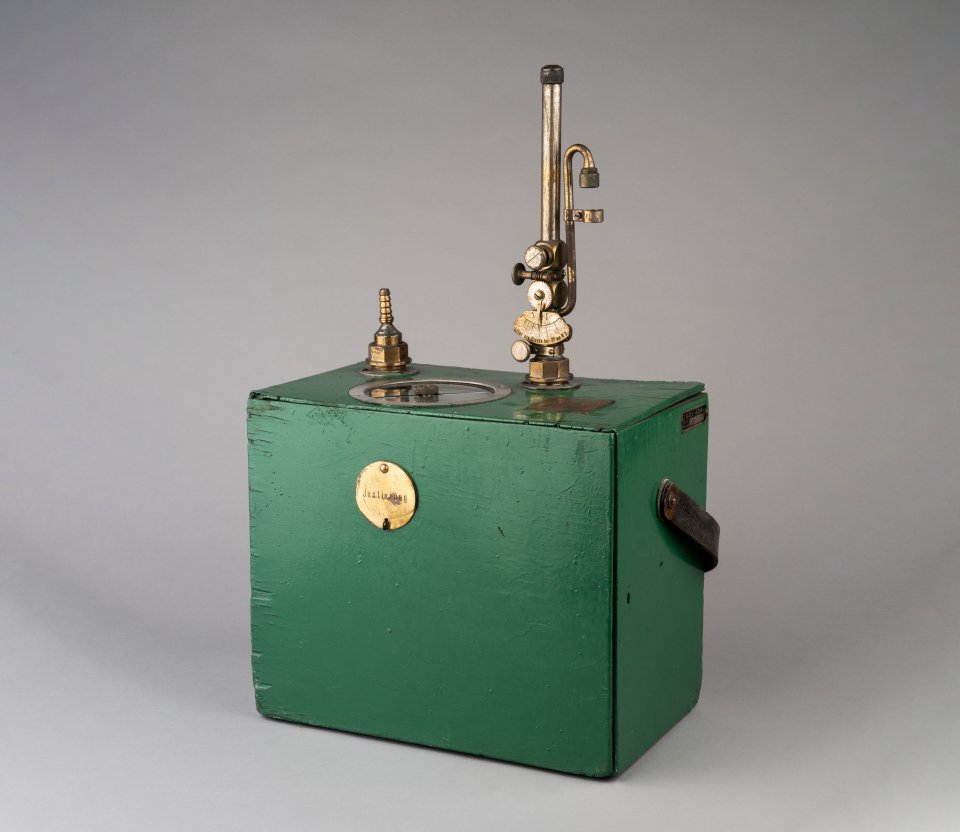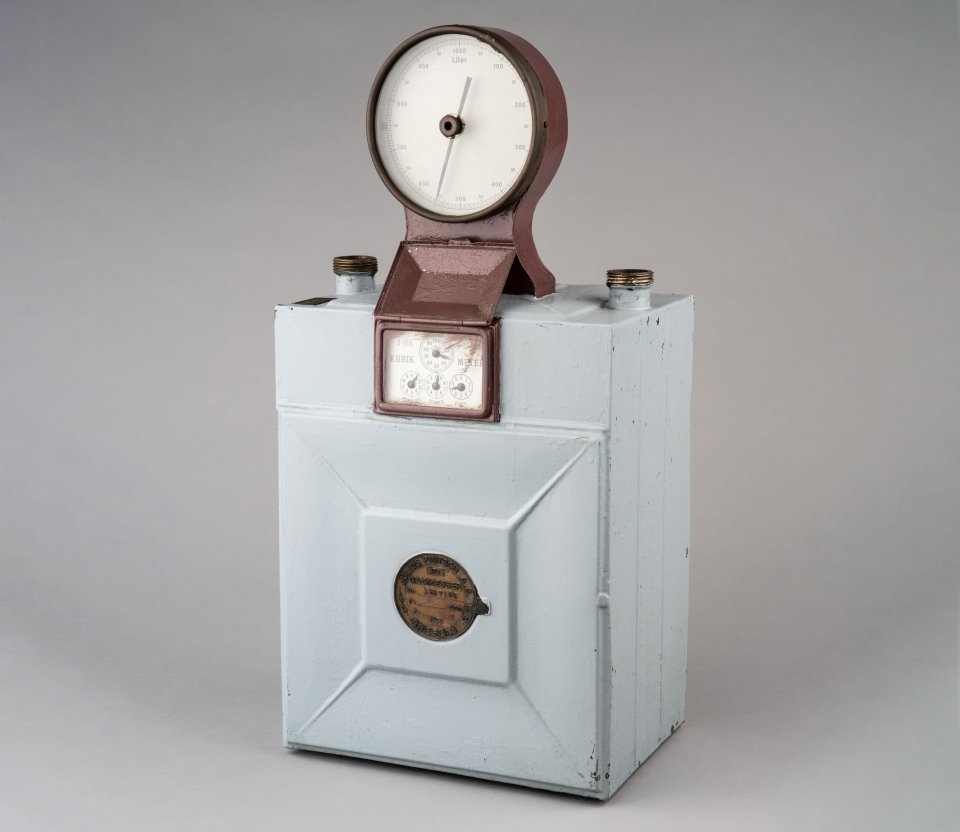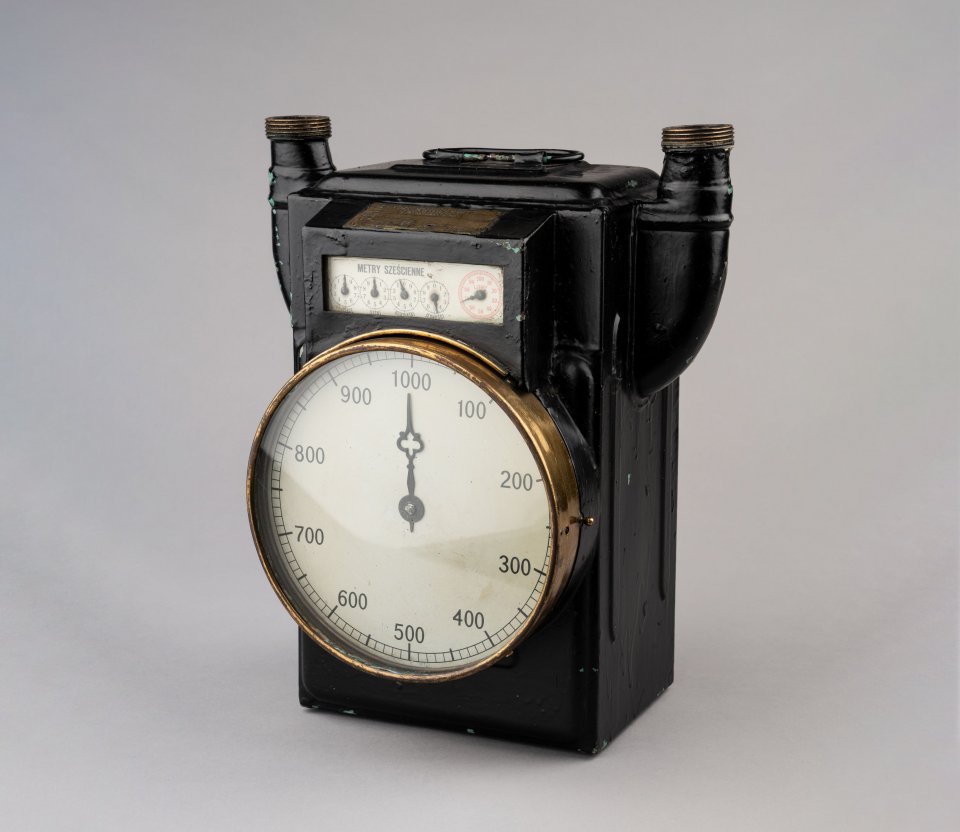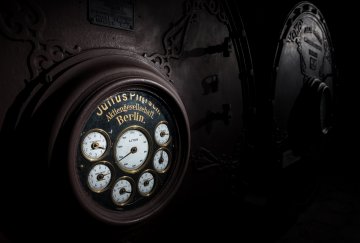

New/old business model
A quietly rotating wheel with a red stripe. This is how the price of everyday comfort is measured in many of our homes. How much does heat cost? We have been able to calculate this value accurately for quite some time now. However, the history of gas meters is not limited to the methods of calculating the volume of the fuel used but is also a story about the development of new business models.
Access to gas costs, just as access to the Internet. In the past, when connecting with the Internet, we used to pay for the data downloaded or the time we spent online. This resembled the billing method for the gas supplied at the inception of the residential gas industry – people paid for gas when they needed it.
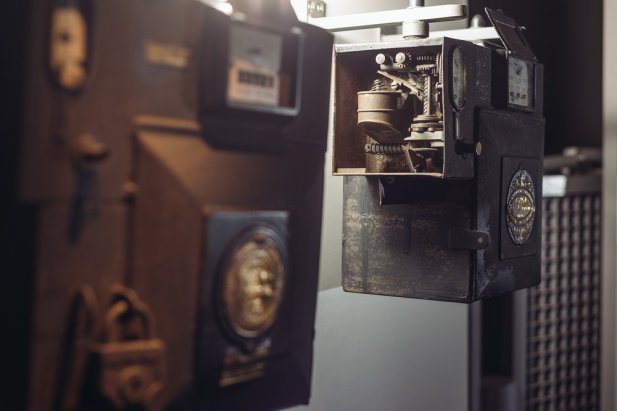

Gas just like the Internet
The oldest gas meters were fitted with automatic slot mechanisms – they provided a specific volume of gas on the insertion of coins or tokens. This solution was later replaced by a fixed fee – it was paid monthly in advance and periodically adjusted.
The method which worked well for settling gas bills is familiar to us not only from how we pay for our phones or the Internet but also for the increasingly broad range of subscription-type services – films, music, or data storage space.

Gas hackers
Perhaps this was the reason why gas meters also had their own hackers – con artists who tried their hardest to access the gas network illegally. The development of these devices is therefore also a history of evolving security features: the increasingly accurate control of the inserted coins, the introduction of dedicated gas tokens, and special security measures preventing gas meters from being clocked back.
Gas meters are also worthy of our attention because many of them are not only technologically advanced for their time, but can also surprise us with their stylish industrial aesthetics.
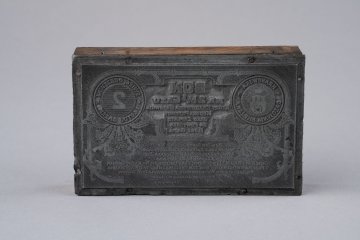

Gas voucher
The cost of gas is an important element of a household budget. The price of this fuel is dependent on the global economic situation and sometimes also politics. Nonetheless, the differences in the price of gas seen on our bills today are nothing compared to the volatility of gas prices when that particular fuel was still generated from coal. The new technology was expensive, and the economy was damaged by inflation.
In these circumstances, every consumer was determined to have access to a stable price of gas for at least some time to come! This opportunity came in the form of a simple solution implemented by many different gasworks – a voucher. The purchase of a voucher at the gasworks was equivalent to a prepayment for a certain amount of gas and protected the consumer against price increases. One needed to make haste, however, as the sale of vouchers was limited.
These particular vouchers were issued by the Kraków Municipal Gasworks and covered 50 m³ and 2 m³ of gas, respectively.
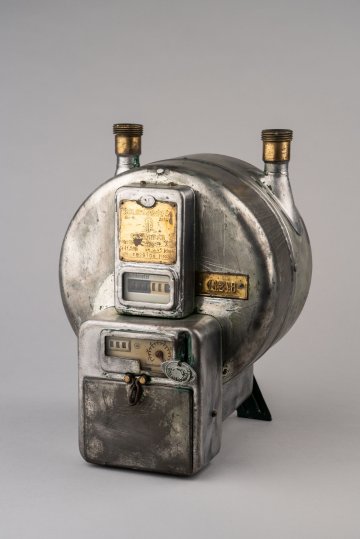

Billing challenges
From the inception of the publicly accessible gas network, gasworks have found it problematic to secure payments for gas. Their work was made much easier with the introduction of token gas meters. Their operation was similar to that of slot machines – the gas flowed once special tokens or coins were inserted. They were installed most often inside premises where gas was required “on demand” – for example, in hotels or social housing. Regrettably, this did not discourage swindlers! Dishonest gas users tried their best at counterfeiting ten pfennig coins and tokens.
In order to prevent fraud, gasworks introduced unique slot mechanisms which prevented the use of tokens issued by other towns or those which had been forged. That is why tokens of different value and from different gasworks varied in their weight and material from which they were made. As a result, these modest examples of former energy billing solutions are now also mementoes of times gone by. This is because they often carry information on where and when they were issued.
Gas for tokens
The gas payment methods changed similarly to the ways in which gas was used. One of the most fascinating inventions were gas meters fitted with an automated slot mechanism. At the end of the 19th century, such devices were commonplace and practical – gas was supplied to the home only once a special token was inserted into the meter. Tokens could be purchased from the gasworks. Similarly to coins, they had different denominations and allowed to purchase different quantities of gas. This made it easier for customers to settle their bills – gas was delivered “on-demand” when it was needed, and the gasworks no longer had to deal with the problem of unpaid bills and having to prepare labour-intensive estimates of consumed gas based on gas meter readings taken by meter reading agents.
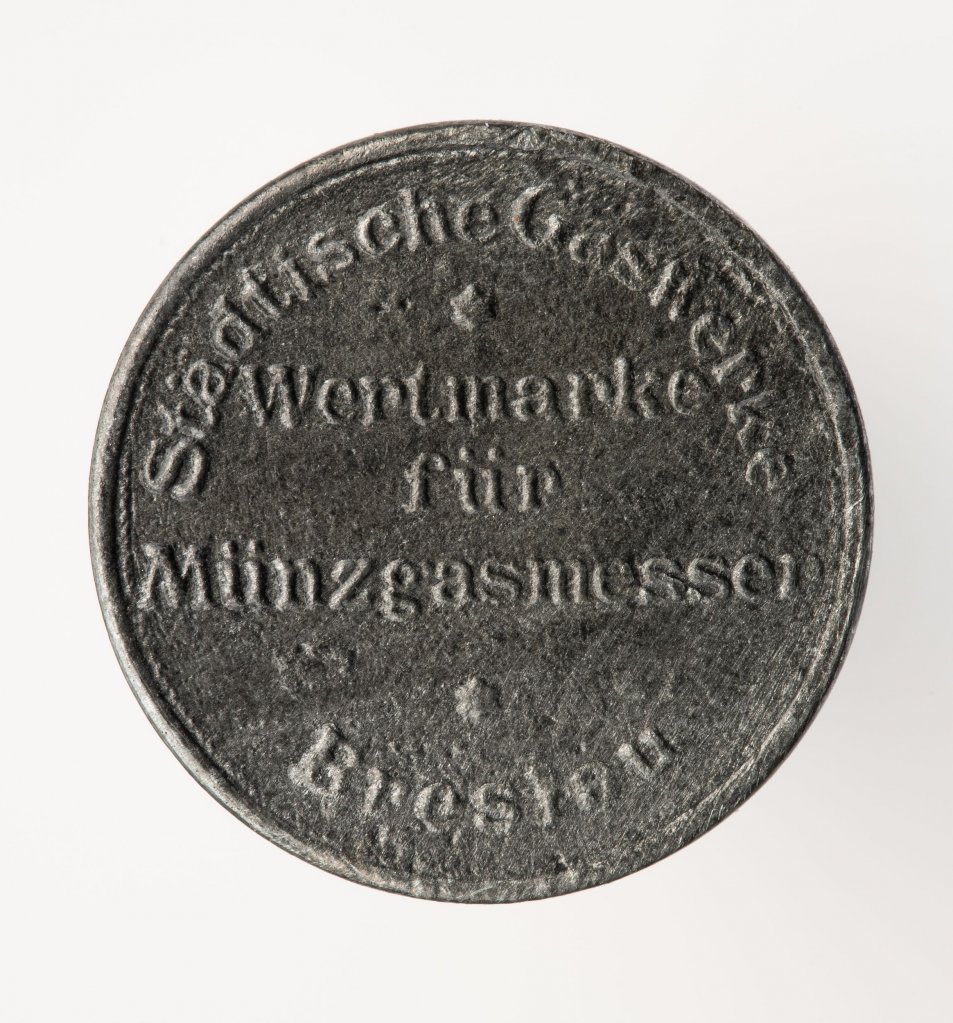
Exhibit gallery
Gas meter from before the Great War
This gas meter activated the gas to flow on the insertion of special tokens. The device was manufactured in 1911 by Julius Pintsch AG from Berlin.
The gas meter was manufactured using innovative materials, such as steel and non-ferrous metals, while its bellows are made of leather.
Before the First World War, it was possible to settle one’s gas bill with coins carrying the denomination of 10 pfennigs. After the war, the coins were replaced with tokens.
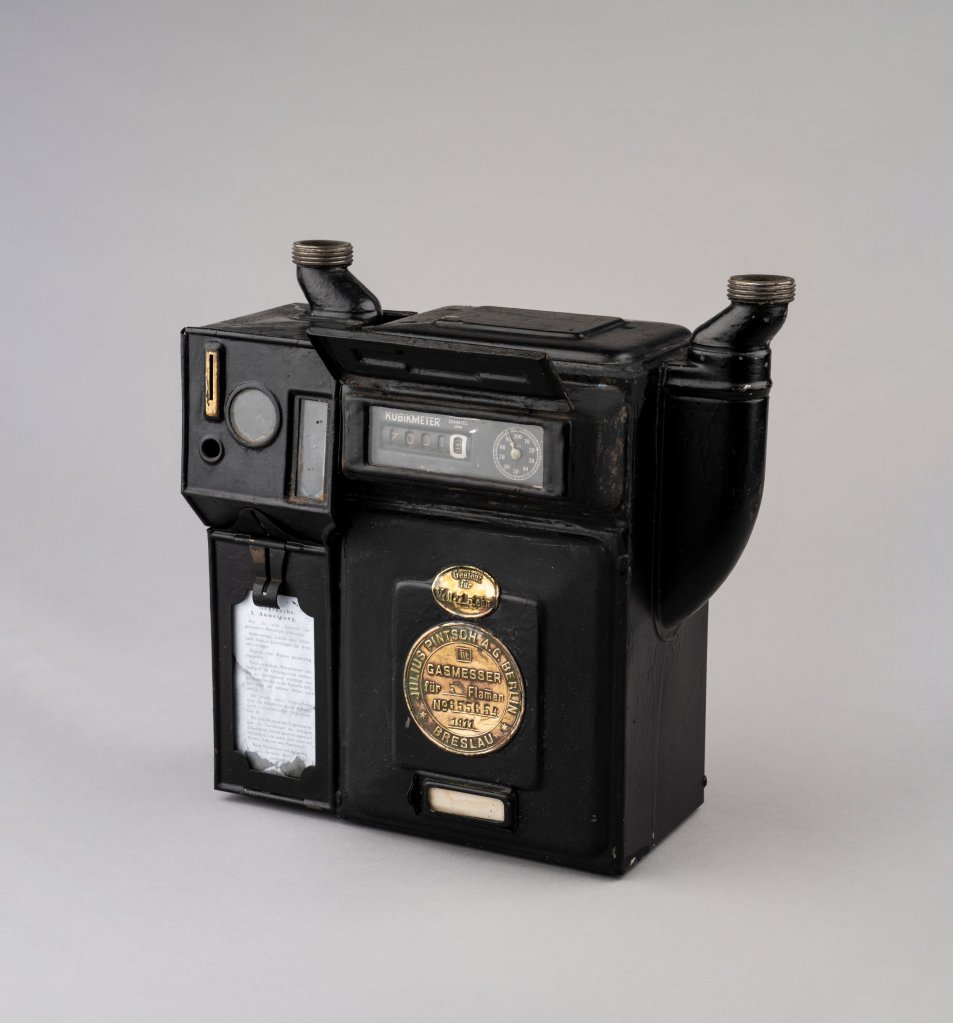
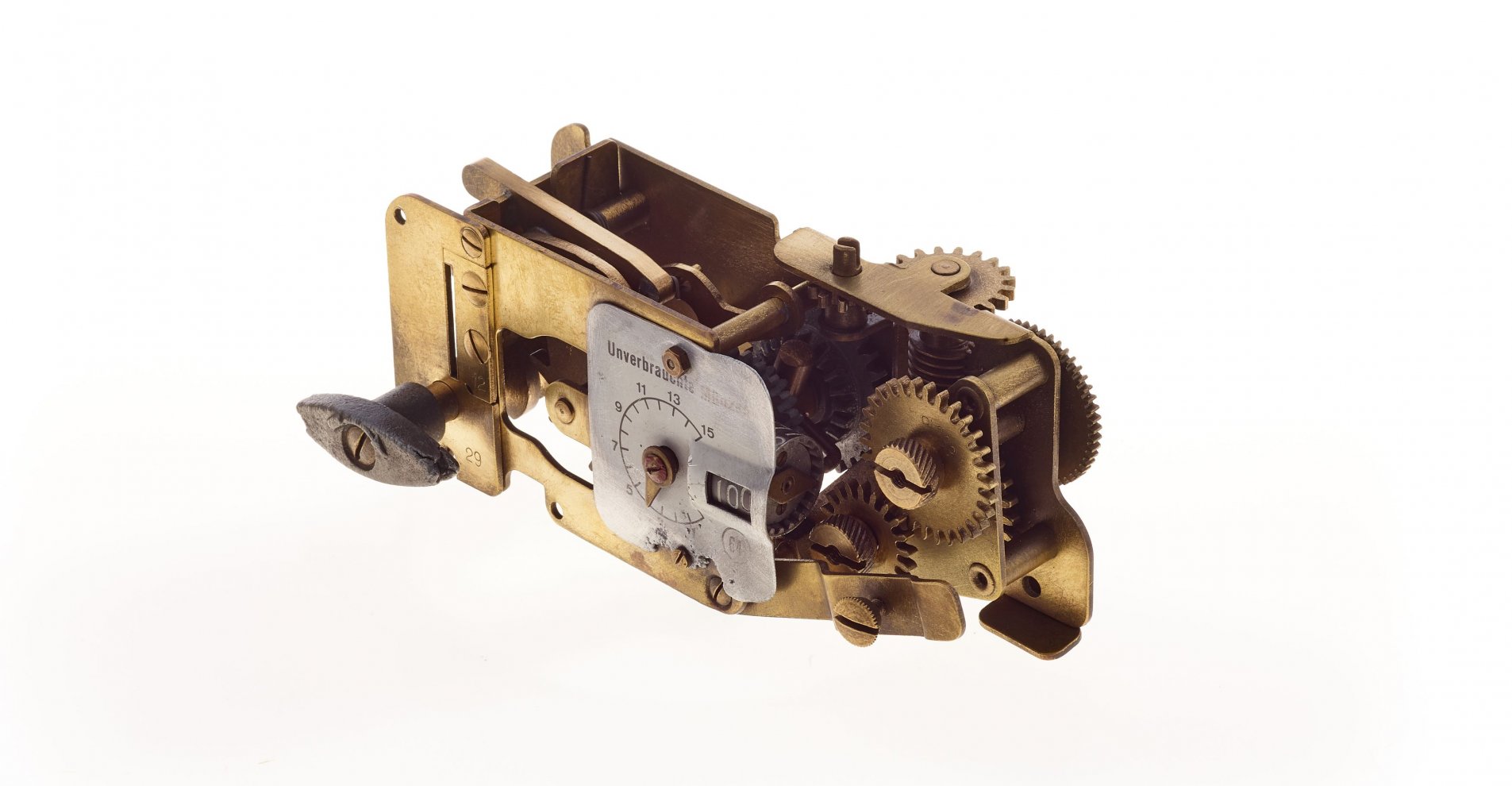
Secrets hidden with the mechanism
Tiny gas tokens had a long way to travel here. Before they fell into a container from which they could be removed by a gas agent, the tokens activated various cogs and ratchets. In this way, they performed their most important task – they opened the valve releasing the gas. An old-fashioned counter accurately calculated how many tokens were inserted and the quantity of the gas which flowed through the device.
Stand out or …
Gas meter manufacturers were in direct competition with each other. Just like today, one way of attracting the attention of potential clients was to introduce stylish designs to their product range. For this reason, Julius Pintsch AG produced circular gas meters.
The devices built by Julius Pintsch AG were superior-quality gas meters, which were also often used for industrial purposes. Apart from bellows gas meters, the Pintsch factory produced laboratory gas meters, recording and control gas meters and wet test meters.
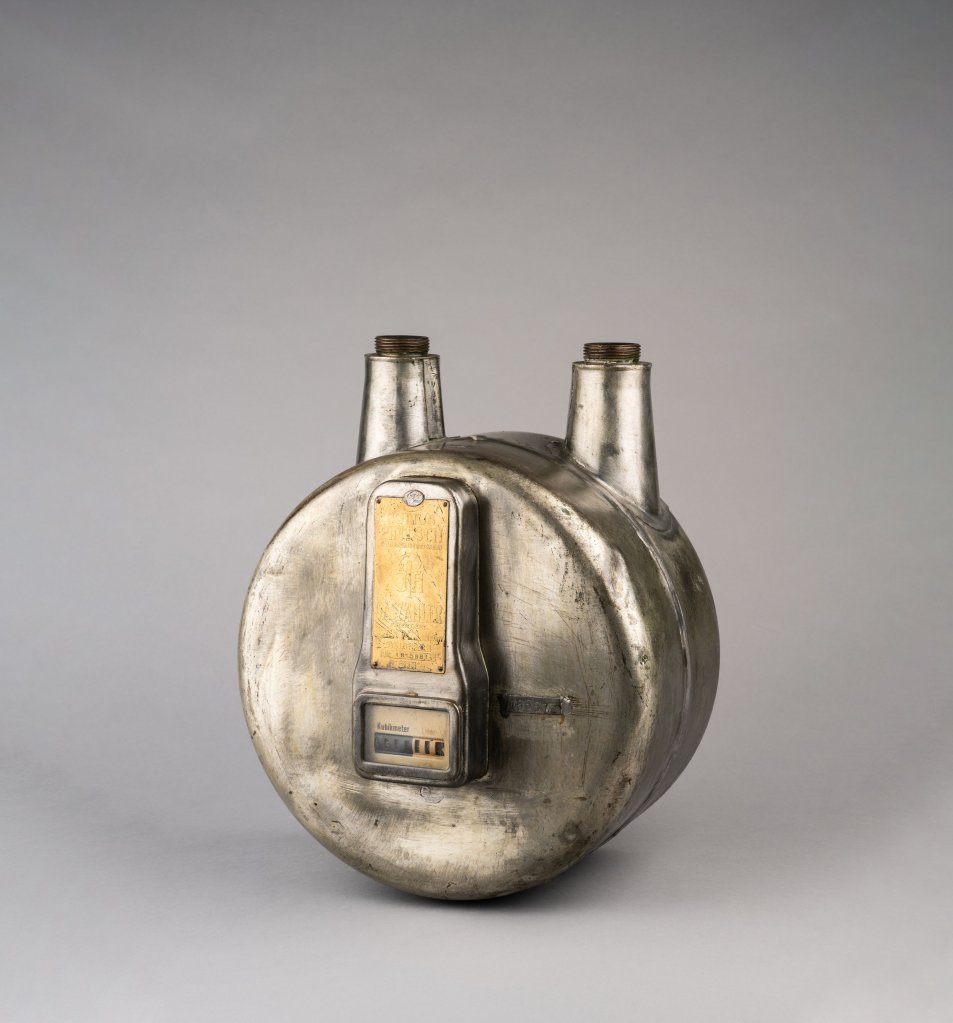
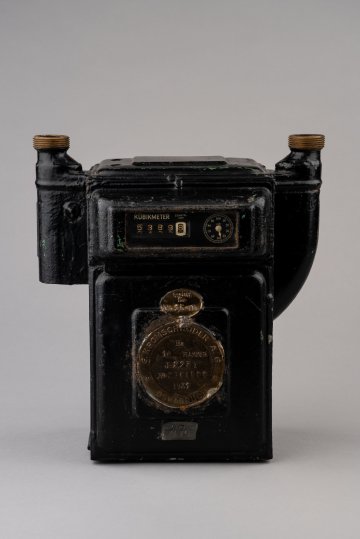

How many flames are needed?
Today, we are used to measuring gas in cubic meters, although in the past this measuring unit was not an obvious choice when it came to gas.
The German-made gas meters, once popular in Poland, featured mysterious “flames”. This is how the throughput of this bellows gas meter is defined – its rating plate indicates that it amounted to ten flamme, meaning flames.
An additional description visible on the casing helps to solve this mystery. It explains that ten flames mean one and a half cubic meters per hour. How many flames does the throughput of your gas meter have?

Cross-section of a gas meter
Through this gas meter, gas flows like blood through a heart. This device was used in houses heated with gas. As it flowed through the gas meter, the gas filled two bellows in succession, which moved alternately and powered the measuring instrument. The meter then accurately calculated the gas used to heat the house.
The cross-section of the device allows us to look inside and find out what types of mechanisms are hidden behind the steel casing.
Number one from Tczew
This contemporary bellows gas meter seems completely ordinary; however, it occupies an important place in the museum’s collection.
The secret to its singularity are the small letters visible above the gas usage display: “METRIX nr 000001 1995”. The writing indicates that this is the first gas meter made in this model, with its serial production starting in 1995.
This particular gas meter was manufactured in Tczew by the “METRIX” company, one of the most accomplished gas meter manufacturers in Poland.
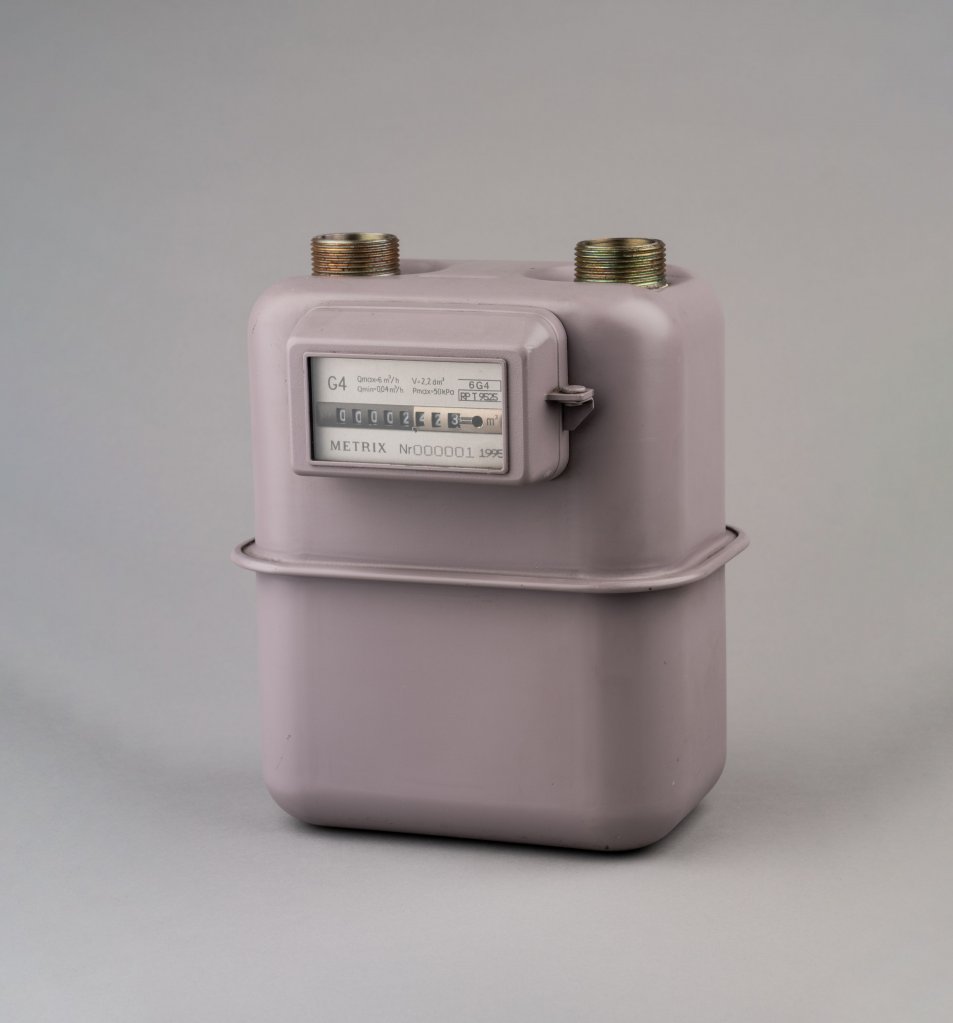
Exhibit gallery
Souvenir from the 19th century
This exhibit is one of the oldest measuring devices in the collection of the Gasworks Museum. With its cylindrical shape, this device resembles a barrel. The exhibit was built in 1896 by S. Elster of Berlin.
The gas meter measured the consumed gas and provided the value in cubic meters or, more accurately, in litres. Made from steel, it also features elements made from non-ferrous metals.
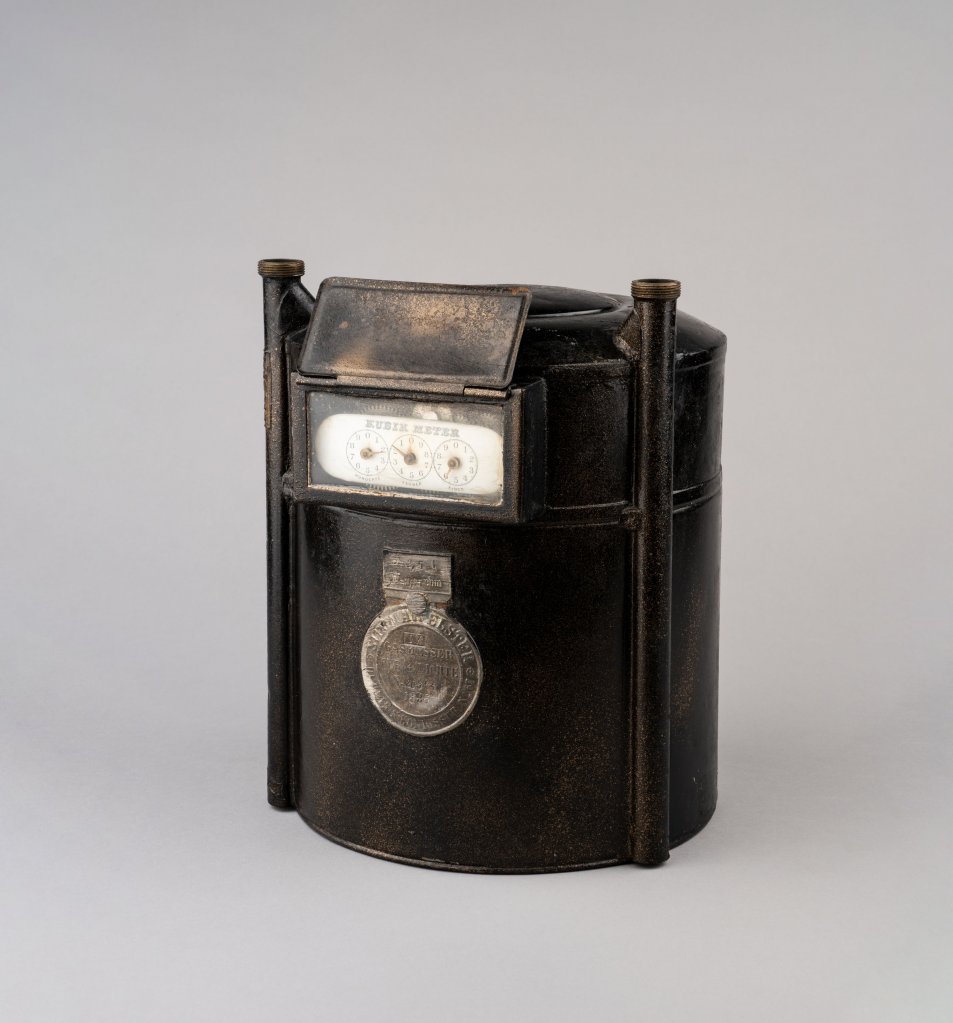
Exhibit gallery
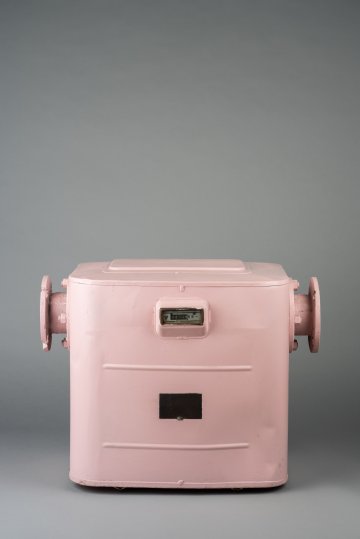

Industrial gas meters
These gas meters were designed to measure gas flow in industrial plants.
The gas meter on the right is equipped with a high-capacity turbine. Its maximum throughput is 6000 m³/h. It was manufactured by S. Elster in 1968.
The other gas meter’s impressive throughput was guaranteed by the leather bellows housed in a steel casing. This particular device was constructed in Tczew in 1972.
Exhibit gallery
Secret weapon
We will not see this type of gas meter in our homes. This device was designed for a specific use – it is a secret weapon in the hands of a controller!
A control gas meter is used to test the functioning of other gas meters. It is equipped with a precision burner and a pressure measuring device.
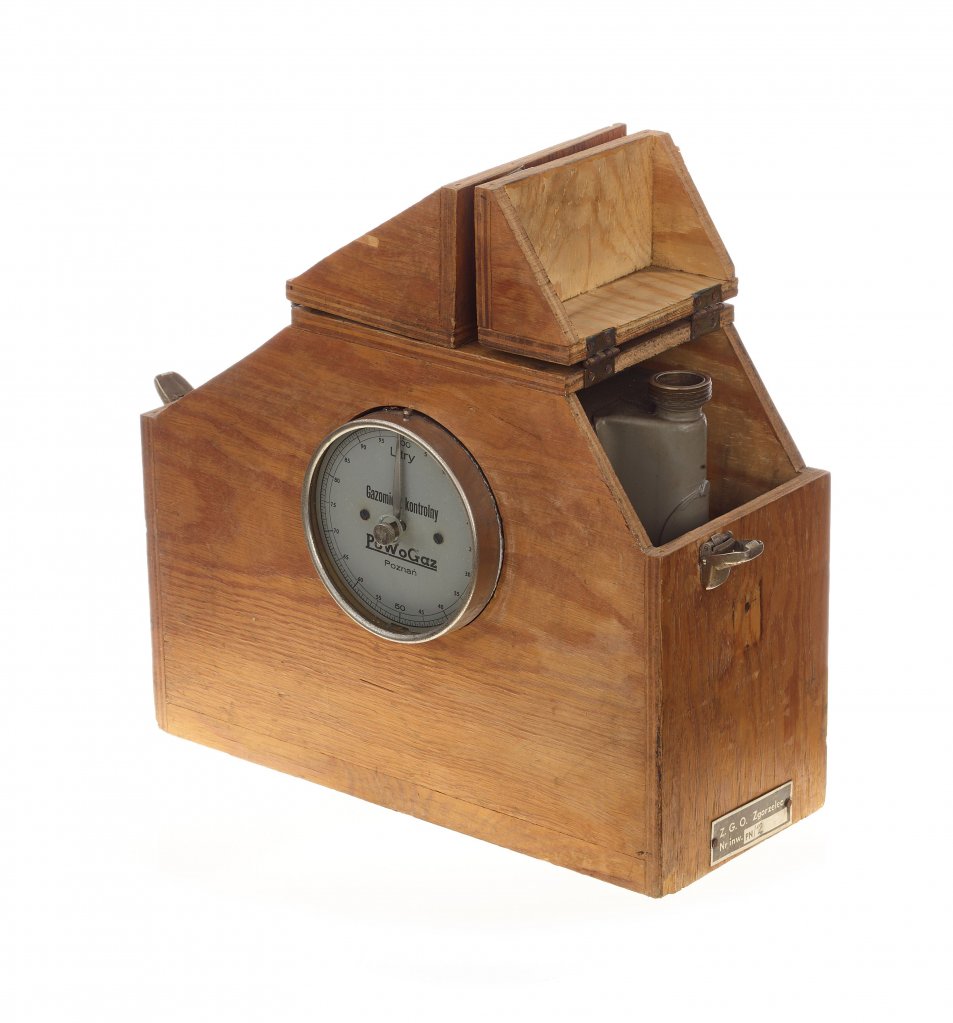
See other virtual exhibitions
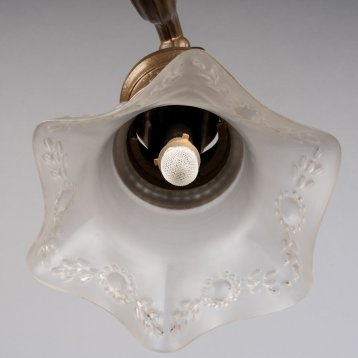
Fors and againsts of gas lighting
The birth of modern cities was illuminated by gas light. The new source of light introduced many changes to the domestic and social life of their residents. Although gas lighting was ultimately swallowed up by the darkness of history, it is still possible to encounter traces of its former glory.
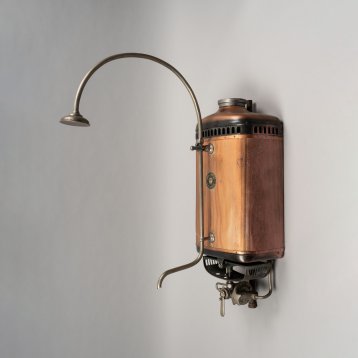
Household gas-powered appliances
These silent companions of our daily lives are also evocative of global civilizational changes. Although today we associate stoves, heaters and refrigerators with electricity, in the 19th century they were powered by … gas. The introduction of these appliances to people’s homes heralded a lifestyle revolution that continues to this day.
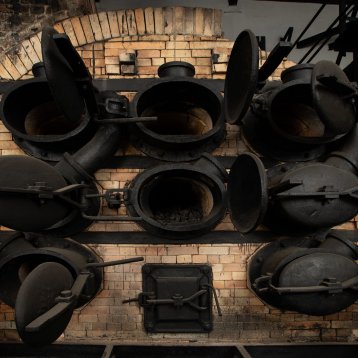
The Earth’s fire at the beck and call of cities
An accidental visitor to a traditional gasworks will see a tangle of pipes, some baffling geometrically-shaped installations and mystifying devices. Such a gas plant resembles an octopus with a thousand tentacles, which has crawled out of the canal at the edge of the city. What happens inside this tangle of pipes? What are the mysterious towers for?

